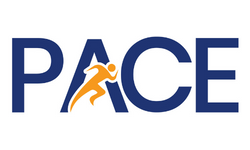Have you ever worked at a company where promotions and raises were given based more on how well you got along with your manager than how well you performed your job? Unfortunately, we all probably have.
Favoritism, often in the form of nepotism, is one of the top complaints on job review sites like Glassdoor. Love it or hate it, these sites expose the truth about how management treats employees. If you don’t have an objective system of measuring employee performance, then by default, your managers will use subjective measures to evaluate staff.
Using subjective measures for promotion upsets employees. But truthfully, it should upset business owners even more. Why? Because while it hurts each employee individually, it destroys the company’s ability to compete entirely.
In Michael Lewis’ book “Moneyball”, he describes exactly the magnitude of the impact of using an objective system versus a subjective system. In 2002, the Oakland Athletics finished first in their division with a record of 103-59. But what is more fascinating was why the 2002 Oakland season so successful.
In baseball leading up to the modern era, scouts would go look at players to see if they had “the look of a ball player.” They used subjective descriptions like “tall”, “athletic build” and “smoothness of motion” to evaluate how a player will perform. Of course, none of those descriptions contain any objective measure of the player’s ability. How fast can they pitch? What’s their batting average? How long does it take them to run from 1st base to 2nd base?
In 2002, the A’s general manager was desperate so he threw out the old scouting reports and used a data driven metrics system that evaluated players based on the wealth of existing objective data that existed. What that allowed Billy Beane to do was recruit and sign players that cost a lot less than what the top teams were paying for players who looked more like professional baseball players, but in fact were inferior based on the objective metrics.
Oakland also created a game strategy based on objective metrics that encouraged walks over big hits and getting on base and scoring versus taking high risk low reward chances like stealing bases. The results are in the history books.
Using objective metrics, when others don’t, can help you win, even when you are under capitalized and struggling with your reputation. Using it when you are already in a position of strength can move you into the top position in your industry. That’s power!
Ironically, many business owners haven’t caught on to the fact that every business is the same. Employee performance is the single biggest factor determining success. Using objective metrics and measurements to describe and measure that success allows you to communicate what success looks like and how to identify it.
We created the PACE system in order to provide what Moneyball and data did for baseball, for our own company. To give companies an enormous competitive advantage in a business where employee performance is no less critical to success than it is in pro sports. PACE, the business management system we’ve created, stands for the four pillars of employee success: Performance, Accuracy, Commitment and Engagement.
Service bureaus are in the business of processing inbound documents and converting paper records to digital records as a service to clients. The work requires our staff to disassemble physical paper files so they can run through high speed scanners, scan the documents so that they are highly accurate representations of the originals. Once that’s done, other team members go in and identify and organize documents, extract data from those records to assist clients with driving business decisions and for search and organization purposes.
Many of these document scanning businesses bill for services mostly on a per page or per file basis. As a result, one of the biggest levers the companies have to outcompete their peers is employee performance. How fast can they scan and index documents? PACE allows you to objectively measure each employee’s performance in each task they perform. The challenge that presents is, how do you compare performance by operators who work in completely different parts of the process in different tasks for different clients?
How do we compare a person who scans documents at a high speed scanner all day to an operator who performs data capture all day? The answer is PACE. By objectively measuring each employee’s performance in each task and by knowing the company average performance in each task, you can create a relative task performance score. For instance, if someone can scan 2000 pages per hour on ABC company’s scanning job and the company average for that task for that client is 1000 pages per hour, the “P” in PACE is 200. We can then use that number to compare how one team member performs that task compared to all other employees performing their tasks, against the company average.
Like anything in life, PACE is a work in progress that we continue to modify and enhance. But with our sights set on weeding out subjective decision making by its roots, we know that we are building a more fair, more just and more equitable company for employees. We believe that a company built on those values will outperform its subjective competitors over the test of time.

